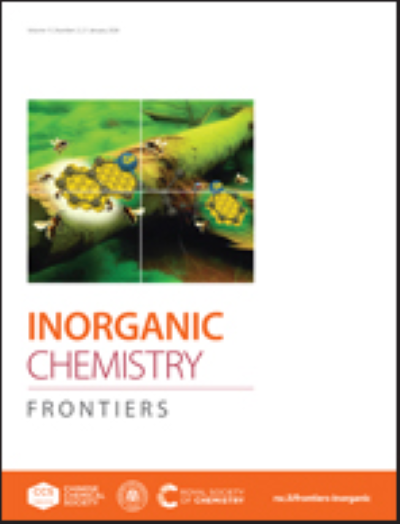金属有机框架(MOFs)作为纳米颗粒催化应用宿主的合理设计:概念、策略和新兴趋势
IF 6.4
1区 化学
Q1 CHEMISTRY, INORGANIC & NUCLEAR
引用次数: 0
摘要
金属有机骨架(mof)是一类用途广泛的多孔配位材料,在各个领域都有广泛的应用,特别是作为多相催化剂。由于mof中金属节点-连接体配位的模块化性质和分子可调性,它们被认为是具有广泛孔隙通道的二次材料的合适宿主。在mof中修饰金属节点或配体功能化可以提高纳米颗粒的锚定能力,有效增强纳米颗粒的稳定性,减轻纳米颗粒聚集的固有性质。本文对纳米颗粒- mof (NP-MOF)复合材料的合成策略(“船中装瓶”、“瓶绕船”和“一锅”)和新型表征技术进行了综述。纳米粒子- mof配位的精确测定对于揭示催化复合材料的构效关系至关重要。认识到mof和金属纳米颗粒的协同特性,我们也探索了NP-MOF复合材料的最新进展,特别关注在过去五年中用于催化应用的锆基mof。因此,我们的目的是帮助读者评估纳米颗粒和mof作为催化剂的化学最新进展,并强调在未来的工作中仍然需要注意的领域。本文章由计算机程序翻译,如有差异,请以英文原文为准。
Rational design of Metal-Organic Frameworks (MOFs) as Hosts for Nanoparticles in Catalytic Applications: Concepts, Strategies, and Emerging Trends
Metal-organic frameworks (MOFs) are a versatile class of porous coordination materials that have found widespread application in various fields, particularly as heterogeneous catalysts. Due to the modular nature and molecular tunability of the metal node-linker coordination in MOFs, they are considered competent hosts for secondary materials in their extensive pore channels. Modifications of the metal nodes or ligand functionalisation in MOFs can improve the anchoring ability of nanoparticles, effectively enhance the nanoparticles’ stability, and mitigate the inherent nature of nanoparticles to aggregate. In this review, the synthetic strategies (“ship-in bottle”, “bottle-around-ship”, and one-pot) and novel characterisation techniques of nanoparticle-MOF (NP-MOF) composites are discussed in detail. The precise determination of nanoparticle-MOF coordination is crucial to shed light on the structure-activity relationships of the catalytic composites. Recognising the synergistic properties of MOFs and metallic nanoparticles, we also explore recent advancements in NP-MOF composites with a special focus on zirconium-based MOFs for catalytic applications within the last five years. Therefore, we aim to aid the reader in evaluating recent advancements concerning the chemistry of nanoparticles and MOFs as catalysts and highlight areas that still require attention in future works.
求助全文
通过发布文献求助,成功后即可免费获取论文全文。
去求助
来源期刊

Inorganic Chemistry Frontiers
CHEMISTRY, INORGANIC & NUCLEAR-
CiteScore
10.40
自引率
7.10%
发文量
587
审稿时长
1.2 months
期刊介绍:
The international, high quality journal for interdisciplinary research between inorganic chemistry and related subjects
 求助内容:
求助内容: 应助结果提醒方式:
应助结果提醒方式:


